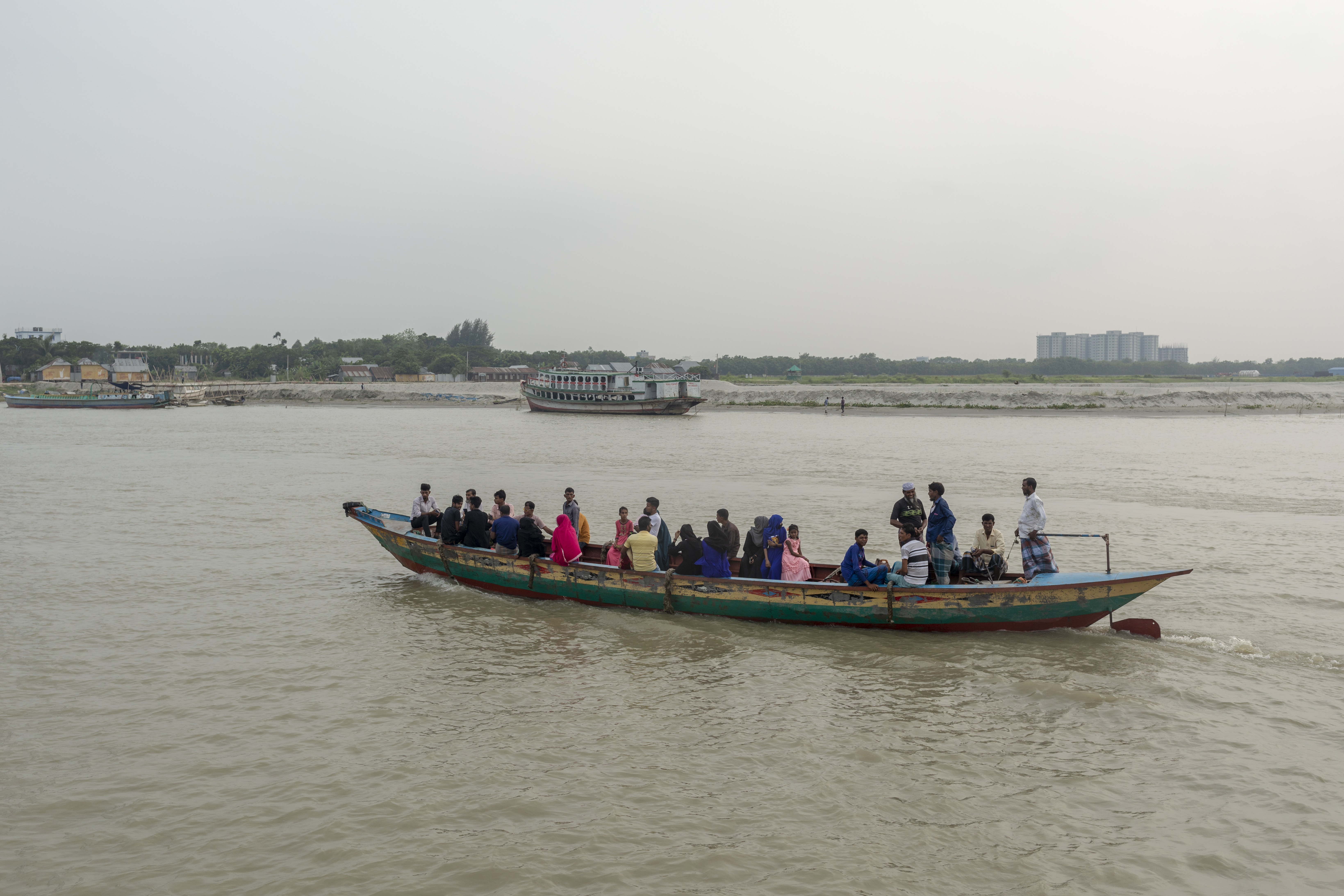|
Ganges-Kobadak Irrigation Project
Ganges-Kobadak Irrigation Project ( bn, গঙ্গা-কপোতাক্ষ সেচ প্রকল্প) or G-K Project ( bn, জি-কে প্রকল্প) is a large surface irrigation system of Bangladesh to serve the Southwestern part of Bangladesh. Kushtia, Chuadanga, Magura & Jhenaidah District are served by this project. History The survey to set up this project was started in 1951. But the Pakistan Pakistan ( ur, ), officially the Islamic Republic of Pakistan ( ur, , label=none), is a country in South Asia. It is the world's List of countries and dependencies by population, fifth-most populous country, with a population of almost 24 ... government approved this in 1954. The project started in 1954-55 economic year. In 1962-63 some kind of rice was cultivated under this project. The water delivery system completed in 1993. References Irrigation in Bangladesh 1993 establishments in Bangladesh {{Bangladesh-stub ... [...More Info...] [...Related Items...] OR: [Wikipedia] [Google] [Baidu] |
Kushtia District
Kushtia District ( bn, কুষ্টিয়া জেলা, pronunciation: ''kuʃʈia'') is a district in the Khulna administrative division of western Bangladesh. Kushtia is the second largest municipality in Bangladesh and the eleventh largest city in the country. Kushtia has existed as a separate district since the partition of India. Prior to that, Kushtia was a part of Nadia district. Kushtia is the birthplace of many historical figures including Mir Mosharraf Hossain (1847–1912), Bagha Jatin (1879–1915) and Lalon (1774–1890). Nobel laureate poet Rabindranath Tagore lived his early life at Shelaidaha. History In 1860, the Indigo revolt spread throughout the Bengal province. Shalghar Madhua in Kushtia district was one of the forerunners in this movement. It inspired all indigo farmers in Kushtia to refrain from paying government taxes. Subsequently, with the publication of the Indigo Commission Report, an act was passed prohibiting coercion of cultivators for ind ... [...More Info...] [...Related Items...] OR: [Wikipedia] [Google] [Baidu] |
Padma River
The Padma ( bn, পদ্মা ''Pôdma'') is a major river in Bangladesh. It is the main distributary of the Ganges, flowing generally southeast for to its confluence with the Meghna River near the Bay of Bengal. The city of Rajshahi is situated on the banks of the river.Hossain ML, Mahmud J, Islam J, Khokon ZH and Islam S (eds.) (2005) Padma, Tatthyakosh Vol. 1 and 2, Dhaka, Bangladesh, p. 182 . Since 1966, over of land has been lost due to erosion of the Padma. History Etymology The Padma, Sanskrit for lotus flower, is a mentioned in Hindu mythology as a byname for the Goddess Lakshmi. The name ''Padma'' is given to the lower part of the course of the Ganges (Ganga) below the point of the off-take of the Bhagirathi River (India), another Ganges River distributary also known as the Hooghly River. Padma had, most probably, flowed through a number of channels at different times. Some authors contend that each distributary of the Ganges in its deltaic part is a remnan ... [...More Info...] [...Related Items...] OR: [Wikipedia] [Google] [Baidu] |
Kopothakho River
The Kopothakho River (Sanskrit), or Kobodak ( bn, কপোতাক্ষ নদ), Kabadak, or Kapotaksha, is a river of Bangladesh. Kopothakho is famous for upholding the memory of popular Bengali poet and novelist Michael Madhusudan Dutt. Origin Though originated from the Mathabhanga river, Kopothakho got disconnected from its source. Now It is mainly a branch of Bhairab river. The river flows through different areas of Jessore, Satkhira, Khulna districts and finally meets the Kholpetua river in Khulna District. The lower part of the river is tidal. Current situation The river is shrinking everyday due to the actions of encroachers. Different organizations have come forward and urged the authorities to take initiatives to save the river. Kapotaksha River in literature Kopothakho first appeared in the famous poem "Kopotakkho Nod" of Michael Madhusudan Dutt. It was one of the first sonnet A sonnet is a poetic form that originated in the poetry composed at the Court of ... [...More Info...] [...Related Items...] OR: [Wikipedia] [Google] [Baidu] |
Bangladesh
Bangladesh (}, ), officially the People's Republic of Bangladesh, is a country in South Asia. It is the eighth-most populous country in the world, with a population exceeding 165 million people in an area of . Bangladesh is among the most densely populated countries in the world, and shares land borders with India to the west, north, and east, and Myanmar to the southeast; to the south it has a coastline along the Bay of Bengal. It is narrowly separated from Bhutan and Nepal by the Siliguri Corridor; and from China by the Indian state of Sikkim in the north. Dhaka, the capital and largest city, is the nation's political, financial and cultural centre. Chittagong, the second-largest city, is the busiest port on the Bay of Bengal. The official language is Bengali, one of the easternmost branches of the Indo-European language family. Bangladesh forms the sovereign part of the historic and ethnolinguistic region of Bengal, which was divided during the Partition of India in ... [...More Info...] [...Related Items...] OR: [Wikipedia] [Google] [Baidu] |
Bheramara
Bheramara ( bn, ভেড়ামারা) is an upazila of Kushtia District in the Division of Khulna Division, Khulna, Bangladesh. The upazila is beside the Padma River, and the important Hardinge Bridge crosses the river between Bheramara Upazila and Ishwardi Upazila, Ishurdi Upazila of Pabna District. Geography Bheramara is located at . It has 26384 households and total area 153.72 km2. Bheramara sub-district is located within Kushtia district, Bangladesh and falls roughly within 23° 40′ – 24° 10′ N and 88° 45′ – 89° 20′ E. The town of Bheramara has an area of 3.26 km2 and a population of 20,676. Agriculture is the main occupation of the people and the major crops are paddy, wheat, mustard, sweet potato, sunflower, onion, garlic, betel leaf, tobacco, and sugarcane. The survey was conducted in Bheramara town and its immediate vicinity. Demographics According to 2011 Bangladesh census, Bhermara had a population of 200,084. Males constituted 49.39% of ... [...More Info...] [...Related Items...] OR: [Wikipedia] [Google] [Baidu] |
Chuadanga District
Chuadanga ( bn, চুয়াডাঙ্গা, tʃuaɖaŋga), is a district of the western Khulna Division of Bangladesh. It is bordered by the Indian state of West Bengal to the west, Meherpur District to the northwest, Jessore District to the south, Jhenaidah District to the east, and Kushtia District to the north. Before partition Chuadanga was one of the five subdivisions under Nadia district. History Chuadanga witnessed a number of uprisings during the British rule of India. The uprisings included Wahabi Movement (1831), Faraizi Movement(1838–47), Sepoy Rebellion (1857), Indigo Rebellion (1859–60), Khilafat Movement (1920), Swadeshi Movement (1906), Non-cooperation movement, Violation of Law and Salt Satyagraha (1920–40), and Quit India Movement or August Revolt (1942). Under British rule, Chuadanga was a sub-division within Nadia District. During partition, in 1947, excepting Krishnanagar thana (still under Nadia in West Bengal). History of Chuadanga can be found ... [...More Info...] [...Related Items...] OR: [Wikipedia] [Google] [Baidu] |
Magura District
Magura ( bn, মাগুরা) is a district in south-western Bangladesh, situated 176 kilometers from Dhaka. It is a part of Khulna Division. The main mode of transportation is by bus, and no train transport is available. Administration Magura district has 4 upazilas. They are: #Magura Sadar Upazila #Mohammadpur Upazila # Shalikha Upazila #Sreepur Upazila Geography Magura District (Khulna Division) with an area of 1048 km2, is bounded by Rajbari district to the north, Jessore and Narail districts to the south, Faridpur district to the east and Jhenaidah district to the west. The district is flat plain in the heart of the Ganges Delta. Climate Demographics According to the 2011 Bangladesh census, Magura District had a population of 918,419, of which 454,739 were males and 463,380 females. Rural population was 798,005 (86.89%) and urban population was 120,414 (13.11%). Magura had a literacy rate of 50.24% for the population 7 years and above: 52.87% for males and ... [...More Info...] [...Related Items...] OR: [Wikipedia] [Google] [Baidu] |
Jhenaidah District
Jhenaidah District ( bn, ঝিনাইদহ) is a district in southwestern Bangladesh. It is a part of the Khulna Division. It has an area of . It is bordered by Kushtia District to the north, Jessore District and West Bengal, India to the south, Rajbari District and Magura District to the east, and Chuadanga District and West Bengal, India to the west. The largest city and headquarter of this district is Jhenaidah. At the beginning of the British rule Jhenaidah was a police outpost and was turned into a thana in 1793. The Jhenaidah Sub division was established in 1862 and was turned into a district in 1984. Geography Annual average temperature: maximum , minimum Annual rainfall: Demographics According to the 2011 Bangladesh census, Jhenaidah District had a population of 1,771,304, of which 886,402 were males and 884,902 females. Rural population was 1,491,112 (84.18%) and urban population was 280,192 (15.82%). Jhenaidah had a literacy rate of 48.40% for the population 7 ... [...More Info...] [...Related Items...] OR: [Wikipedia] [Google] [Baidu] |
Khulna Division
The Khulna Division ( bn, খুলনা বিভাগ) is the second largest of the eight divisions of Bangladesh. It has an area of and a population of 15,563,000 at the 2011 Bangladesh census (preliminary returns). Its headquarters and largest city is Khulna city in Khulna District. History In British Raj Khulna Division was a part of Presidency division. Before 1947 The Presidency division had six major districts, Howrah, Calcutta, 24 Parganas, Khulna, undivided Jessore, & undivided Nadia. In 1947 The Partition of India is divided this division into two. The district of Khulna and the lion half of Jessore District and Nadia District become part of Newly established East Bengal. And rest of the district of the Presidency division become part of West Bengal. In 1948 The lion half Nadia district of East Bengal formed a new Kushtia District. And the govt of East Bengal added the Jessore , Khulna & Kushtia district into Rajshahi Division. After in 1960 the govt of East P ... [...More Info...] [...Related Items...] OR: [Wikipedia] [Google] [Baidu] |
East Pakistan
East Pakistan was a Pakistani province established in 1955 by the One Unit Scheme, One Unit Policy, renaming the province as such from East Bengal, which, in modern times, is split between India and Bangladesh. Its land borders were with India and Myanmar, with a coastline on the Bay of Bengal. East Pakistanis were popularly known as "Pakistani Bengalis"; to distinguish this region from India's state West Bengal (which is also known as "Indian Bengal"), East Pakistan was known as "Pakistani Bengal". In 1971, East Pakistan became the newly independent state Bangladesh, which means "country of Bengal" in Bengali. East Pakistan was renamed from East Bengal by the One Unit Scheme of Pakistani Prime Minister Mohammad Ali of Bogra. The Constitution of Pakistan of 1956 replaced the Pakistani monarchy with an Islamic republic. Bengali politician H. S. Suhrawardy served as the Prime Minister of Pakistan between 1956 and 1957 and a Bengali bureaucrat Iskander Mirza became the first Presid ... [...More Info...] [...Related Items...] OR: [Wikipedia] [Google] [Baidu] |
Irrigation In Bangladesh
Irrigation (also referred to as watering) is the practice of applying controlled amounts of water to land to help grow crops, landscape plants, and lawns. Irrigation has been a key aspect of agriculture for over 5,000 years and has been developed by many cultures around the world. Irrigation helps to grow crops, maintain landscapes, and revegetate disturbed soils in dry areas and during times of below-average rainfall. In addition to these uses, irrigation is also employed to protect crops from frost, suppress weed growth in grain fields, and prevent soil consolidation. It is also used to cool livestock, reduce dust, dispose of sewage, and support mining operations. Drainage, which involves the removal of surface and sub-surface water from a given location, is often studied in conjunction with irrigation. There are several methods of irrigation that differ in how water is supplied to plants. Surface irrigation, also known as gravity irrigation, is the oldest form of irrigation ... [...More Info...] [...Related Items...] OR: [Wikipedia] [Google] [Baidu] |



